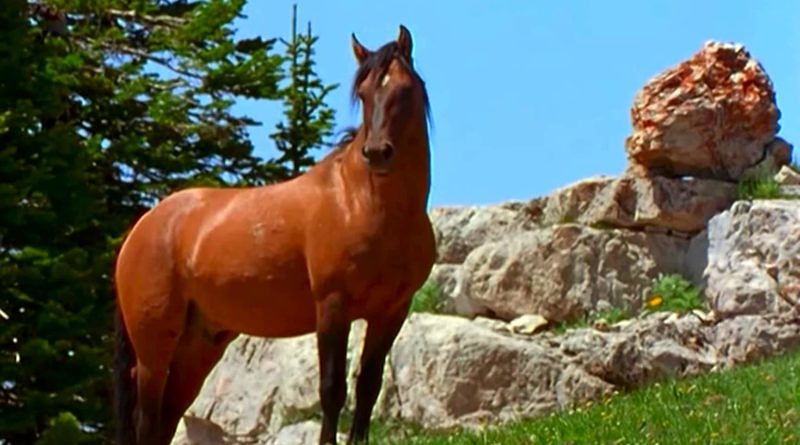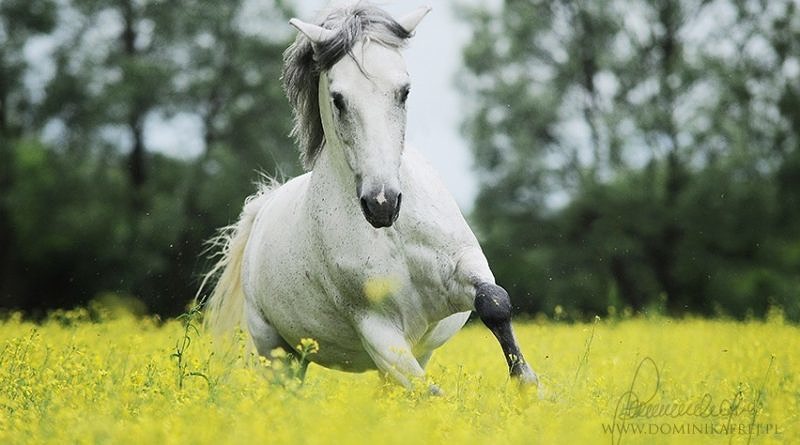Can stallions really tell when you are menstruating?
Is it really dangerous for a woman to handle stallions while on her period? The truth is in the hormones!
Humans and horses have lived alongside each other for thousands of years. The use of horses influenced so much of what we do. From warfare to agriculture, horses have helped us in life or death situations throughout our shared history.
But during the majority of this time, horsemanship was primarily the remit of men – not women – and sometimes we see reflections of that still surviving to this day.
For instance, here is a list of rules – see if you can guess who they all have in common:
- Not allowed to wear flowers or the flowers will shrivel up and die
- Must not handle stallions or they will attack
- Must not eat papaya
- Must not bathe in or cross rivers or they will become possessed by demons
Did you guess it? These ‘rules’ apply to women on their periods. Superstitions about menstruation persist to this very day in various parts of the world. Though attitudes have gradually changed and continue to do so, menstruation is a taboo subject even in our progressive society. The number of euphemisms we have for “that time of the month” is testament to that.
And one of these remnants is the myth that women should not handle stallions while on their period. Usually the explanation given for why this is goes something like this:
“The smell women give off during menstruation is the same as a mare in heat. When stallions smell this they get excited and can become very dangerous for a woman on her period to handle.”
So is there any truth in this? Well, let’s look at the science to find out!
What is a ‘period’?
If you’re a woman, you might think you already know the answer to this question. But unless you paid really close attention in biology class, you might not recall all the details!
The ‘blood’ that is discharged during a woman’s period is actually the result of the thickened lining of her uterus breaking down. In humans this happens about once a month over the course of a few days. For the rest of the month the lining is rebuilt until it is especially thick. The purpose of this thickened lining is to provide nutrients to the implanted embryo in the event of pregnancy. When there is no pregnancy, the lining isn’t needed and breaks down to save energy and resources.
Many mammals follow this pattern – though the cycle varies in length depending on the individual species – but the vast majority of other mammals simply reabsorb the lining instead of it being discharged. In fact, very few mammals actually experience a ‘period’ or menstruation, as it’s more properly called. Among the few that do are humans, some other primates (chimps for instance), some species of bats and, oddly, elephant shrews!
So why don’t we – and these few other animals – also absorb the broken down lining? Well actually we do absorb a lot of it – about two-thirds! It’s a bit of a mystery exactly why we can’t absorb all of it but one possible explanation is that the human uterus is disproportionately large and it’s simply a side-effect of this fact.
Other mammals (but not horses!) also produce a bloody discharge during certain phases of their reproductive cycle and it’s easy to confuse this with a ‘period’. However, it isn’t! For example, a female dog will produce a bloody discharge during estrous or ‘heat’ – this is not the same as menstruation and occurs during the most fertile part of the animal’s reproductive cycle.
It’s all about the hormones!

You’ve probably heard of estrogen and progesterone. These are two of the hormones that control a woman’s – or mare’s – reproductive cycle. The other two major players are called follicle-stimulating hormone (FSH for short) and luteinising hormone (or LH). FSH and LH are both produced by the pituitary gland, part of the brain. Whereas estrogen and progesterone are produced by the ovaries themselves.
The reproductive cycle of mammals is controlled by the various levels of these hormones circulating in our bodies, all of which also interact with each other to control their various levels. There is some variation between species but in essence most female mammals follow a similar pattern:
First the brain produces follicle-stimulating hormone which works to stimulate a follicle in the ovary to start to produce estrogen and mature. Horses and humans normally produce only one baby at a time because only one follicle is stimulated at a time. Species where more follicles mature at once will produce more offspring or ‘litters’ – such as in the case of dogs or rabbits.
Levels of estrogen continue to build, and when they reach a critical level they trigger a surge in LH, which works together with FSH to trigger ovulation – the release of the egg from the follicle. It is at this point that fertilisation can occur, and it is during this time that we say a mare is “in heat” or in estrous. Human women do not have an estrous phase that is obvious to the outside world – though it is thought that we might produce some very subtle cues. A mare, on the other hand, will show a variety of more obvious behavioural changes that most mare owners will already be very familiar with!
Once ovulation has occurred, progesterone levels increase. This progesterone is produced by what is left of the follicle after the egg has been released. Progesterone is the hormone that ensure the uterine lining remains thick, ready for an embryo. If the female doesn’t become pregnant, the remnant of the follicle gradually degenerates and stops producing progesterone. This results in the lining of the uterus starting to break down. In humans, about a third of this lining is discharged as a ‘period’ while in most other mammals, including horses, it is entirely re-absorbed without any external signs.
So as a woman’s period – or the equivalent reabsorption event in a mare – approaches, FSH, LH, progesterone and estrogen are all low or in decline. Following the degradation of the uterine lining, the entire process begins again!
Enough science – what’s the bottom line?
The hormonal cycles of a woman and a mare are indeed the same. The same hormones are involved and they interact with each other and our bodies in much the same way to bring about fertility and infertility.
However, people who believe that stallions are interested in menstruating women because they smell like mares in heat have it completely backwards! A woman is most like a mare ‘in heat’ when she is at her most fertile – not during her period! In terms of hormones, when a mare is in heat she will have a high level of estrogen while a woman on her period will have a low level of estrogen – a woman on her period is on the complete ‘opposite’ side of her cycle to a mare in heat!
There is no reason a stallion should confuse a human woman on her period for a mare in heat.
So why the myth?
When we think about the reproductive cycle of a human woman, the most ‘visible’ part of that cycle is menstruation. That isn’t the case for a mare – a mare’s ‘period’ cannot be seen since she just absorbs the discharge.
Equally, when we think of a mare’s reproductive cycle, the most ‘visible’ part is when she is in heat. Whereas most women don’t even know when they are at their most fertile themselves! There are certainly no clear outward signs.
As a result, the most ‘visible’ parts of the reproductive cycle in each species have been confused with each other, even though they are not in fact the same part of the cycle at all.
If it was obvious to us when a mare was ‘on her period’ or when a woman was ‘in heat’, we would never confuse the two! But because it isn’t and the two events seem superficially similar, people historically got in a muddle over how the two are related and decided that they must be the same thing.
What experienced horsewomen say
Women who have worked extensively with many different stallions on a regular basis tend to agree that, from their own experience, there’s no difference in how stallions behave towards them when they are on or off their period. This is consistent with the science and makes perfect sense in light of all the countless other things that menstruating women are forbidden from doing!
For fun, here are a few more things women who are menstruating are not supposed to do according to various cultures and traditions:
- Not allowed to drink cow’s milk
- Not allowed to see the sun
- Not allowed to touch other people (male or female)
- Must not touch pickles or they will go off
- Must stay away from herbs or they will shrivel up
- Have to wash their clothes separately to the rest of the family
- Not allowed to read or study
- Must not do your nails or something bad will happen
- Not allowed to cook in their own home
- Not allowed to take a daytime nap
- Not allowed to drive a car
- Not allowed to ride a horse (nor an elephant or ox!)
- Must not touch fruit or it will decay
So if you think your stallion acts differently towards you when you are on your period, it may be worth considering whether you are the one behaving differently… Perhaps you don’t feel too good in general during that time or you’ve heard the myth about stallions and feel uncertain as a result. Both could influence how you handle your horse and lead to them behaving differently as a result.








Pingback: Can You Wear a Tampon While Horse Riding? – Equestlife